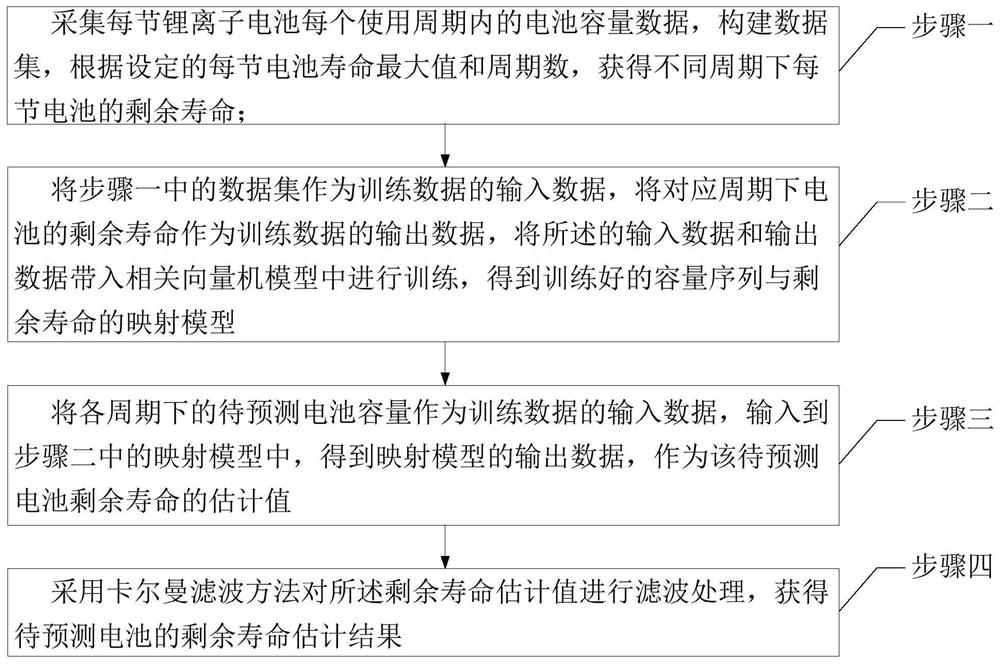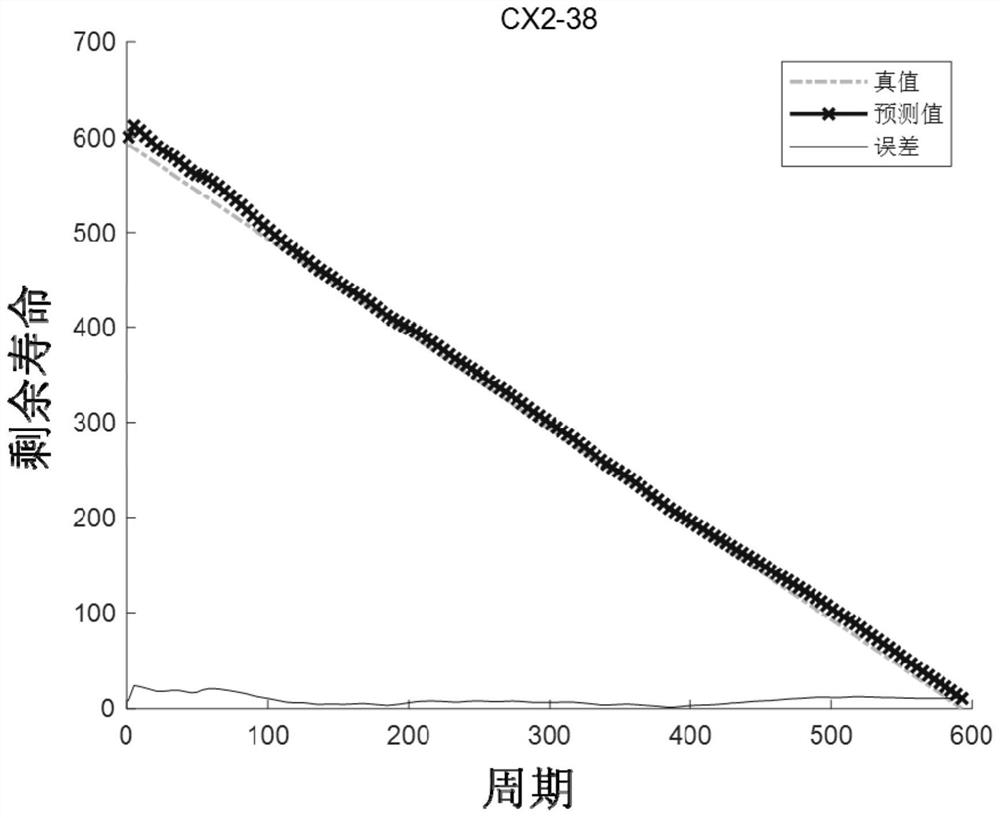A direct prediction method for remaining life of long-life space lithium-ion batteries
A lithium-ion battery and prediction method technology, which is applied in the field of direct prediction of remaining life and lithium-ion battery life prediction, can solve the problems of life prediction model mismatch, difficulty in obtaining accurate and stable prediction results, etc., to reduce measurement noise, Good forecasting effect and high accuracy of forecasting results
- Summary
- Abstract
- Description
- Claims
- Application Information
AI Technical Summary
Problems solved by technology
Method used
Image
Examples
specific Embodiment approach 1
[0014] Specific implementation mode one: refer to figure 1 and figure 2 This embodiment is specifically described. The method for directly predicting the remaining life of a long-life space lithium-ion battery described in this embodiment includes the following steps:
[0015] Step 1. Collect the battery capacity data of each lithium-ion battery in each service cycle, construct a data set,
[0016] According to the set maximum life of each battery and the number of cycles, the remaining life of each battery under different cycles is obtained;
[0017] Step 2. Use the data set in step 1 as the input data of the training data, use the remaining life of the battery under the corresponding cycle as the output data of the training data, and bring the input data and output data into the relevant vector machine model for training , to obtain the mapping model of the trained capacity sequence and remaining life;
[0018] Step 3, using the capacity of the battery to be predicted un...
Embodiment 1
[0022] The remaining life prediction results of the three groups of batteries are shown in the table below, and their specific evaluation indicators are shown in Table 1.
[0023] Table 1:
[0024]
[0025] Step 1. Use the battery data set of the University of Maryland for testing. The battery data set contains CX2-26, CX2-37, and CX2-38 battery data. Construct a data set with the data of the battery capacity of each battery in each cycle, which is recorded as Cap i (k), where k is the number of cycles, and i is the battery number; set the maximum value of battery life in section i For the number of cycles corresponding to when the battery capacity degrades to 80% of the rated capacity, calculate the remaining life RUL of the battery corresponding to the kth cycle according to the formula (1) i (k);
[0026]
[0027] Step 2. Use the data of the two batteries of CX2-37 and CX2-38 as the training data to construct the training set [xtrain,ytrain] of the RVM model:
[0...
specific Embodiment approach 2
[0053] Embodiment 2: This embodiment is to further explain the method for directly predicting the remaining life of a long-life space lithium-ion battery described in Embodiment 1. In this embodiment, in step 1, the data set is recorded as: Cap i(k), wherein, k is the cycle number, and i is the battery number, which contains the data of 1 battery altogether;
[0054] The remaining life of each battery RUL under different cycles i (k) is:
[0055]
[0056] In the formula, is the maximum battery life of the i section.
[0057] In this embodiment, The cycle in is the corresponding number of cycles when the battery capacity degrades to 80% of the rated capacity.
PUM
 Login to View More
Login to View More Abstract
Description
Claims
Application Information
 Login to View More
Login to View More - R&D
- Intellectual Property
- Life Sciences
- Materials
- Tech Scout
- Unparalleled Data Quality
- Higher Quality Content
- 60% Fewer Hallucinations
Browse by: Latest US Patents, China's latest patents, Technical Efficacy Thesaurus, Application Domain, Technology Topic, Popular Technical Reports.
© 2025 PatSnap. All rights reserved.Legal|Privacy policy|Modern Slavery Act Transparency Statement|Sitemap|About US| Contact US: help@patsnap.com



